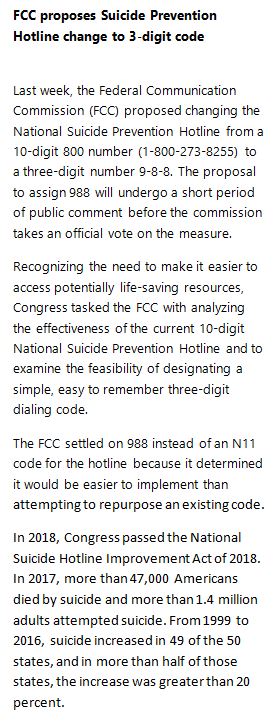The North American Numbering Plan (NANP) establishes what telephone numbers exist. It would be safe to say that most people know that 9-1-1 will connect callers with police, fire, and ambulance and rescue services. But do you know what the seven other short code numbers stand for?
N11 numbers, or telephone short-codes, provide callers quick and simple access to special services. The shortened numbers eliminate the need for individual area codes and simply route people to the local service based on their location. The Federal Communications Commission (FCC) administers the N11 codes. Below is a summary of N11 assignments, and traditional usage:
 2-1-1 Community Services
2-1-1 Community Services
211 was established in 2000 for community information and referral services. Nonprofit organizations such as United Way of America or the local government operates the 211 system. All 50 states have active 211 systems, but not all counties have a destination, like United Way, for 211 calls. Visit http://www.211.org for information about services available in your area. Most TDS communities have established a 211 service.
3-1-1 Municipal government services
Assigned in 1997, 311 provides non-emergency information about municipal services to the public. Examples of calls to 311 include: debris in roadway, graffiti reports, dead animal removal, and potholes. 311 is available in several major cities and an increasing number of counties in the United States.
4-1-1 Directory assistance
411 is unassigned by the FCC but virtually nationwide used by carriers for directory assistance. TDS subscribers can use 411 to call TDS directory assistance or to find information like, an address, do a reverse phone number lookup, get movie listings, sports scores, or even a stock quote. Phil Berry, manager of Product Management – Voice, noted that TDS has two vendors that supply directory assistance service. There is a charge (generally $1.20 per call). For more information, click here.
5-1-1 Traffic information or police non-emergency services
511 became mandatory in the United States in 2007 for road and weather information as the transportation and traffic information telephone hotline. Where available, mobile and landline travelers can dial 511 for information and updates to their location.
6-1-1 Telephone company customer service and repair
Similar to 411 services, 611 is unassigned but in some areas, 611 was used was used to report service or repair troubles to the central office from a subscriber. TDS subscribers will be connected to TDS customer service when they dial 611 as if they dialed 1-888-CALL TDS (1-888-225-5837).
7-1-1 TDD and relay services for persons who are hearing impaired
Assigned in 1997, persons who dial 711 will reach a Telephone Relay Service (TRS). The FCC extended the rule to include all VoIP telephones in July 2007. TDS has phone plans designed to work with TRS, and when a profile is set up with the TRS operator, long distance TRS usage can be billed on a TDS bill.
8-1-1 Underground public utility location (United States)
In 2005, 811 was used to coordinate location services for underground public utilities. This safety measure not only helps prevents damage that interrupts telecommunications, but also the cutting of subterranean power lines, water mains and natural gas pipes.
9-1-1 Emergency services (police, fire, ambulance and rescue services)
911 provides single-number access for all emergency services, including police, fire and medical. With TDS service, 911 locations are fixed, which allows for faster emergency response.


